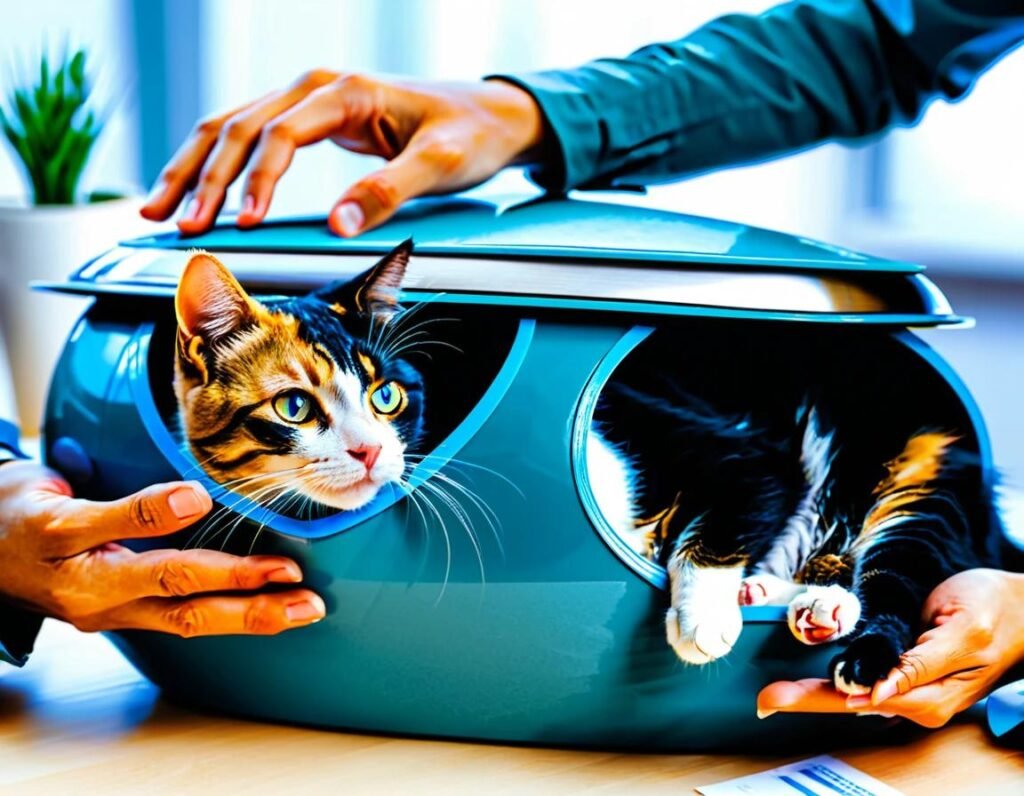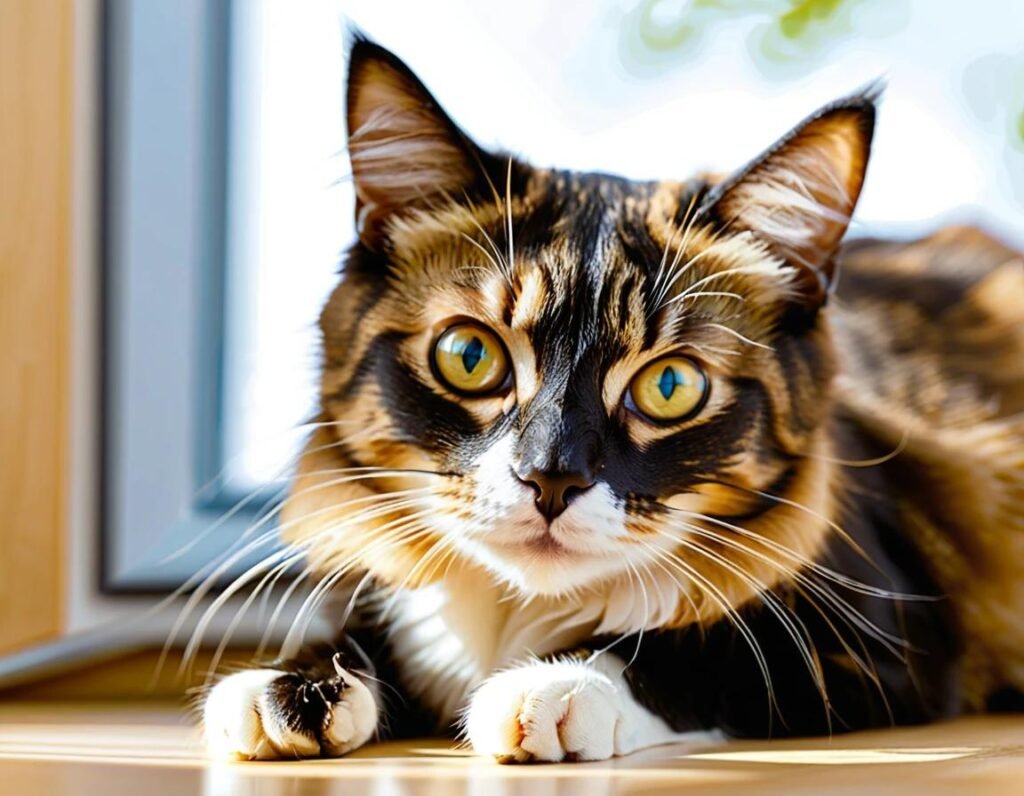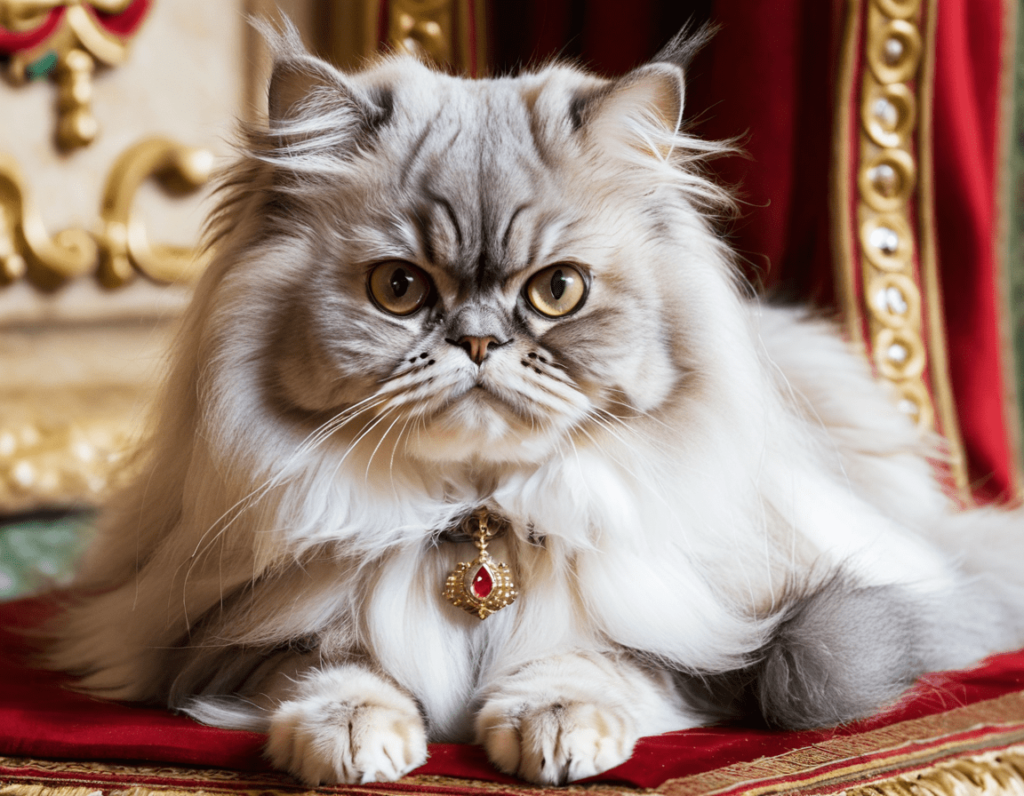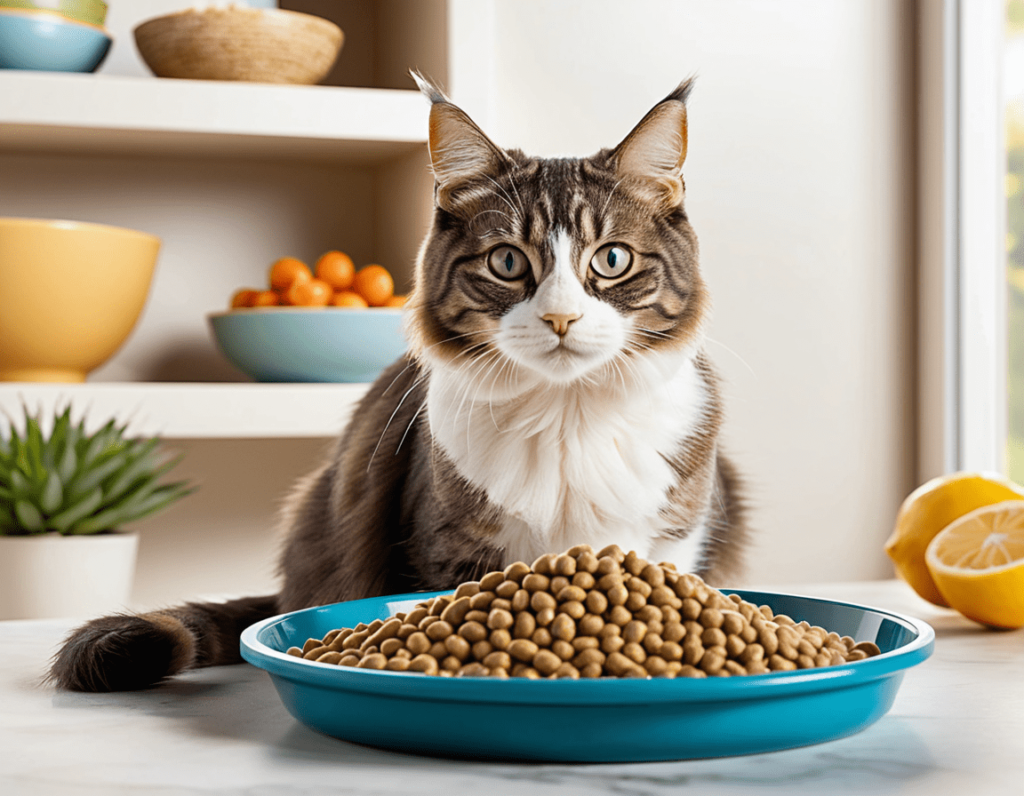
If you’re a cat parent, you’ve probably realized by now that your furry friend isn’t just a pet; they’re a full-fledged member of the family. And, just like you’d protect your family with health insurance, why not consider doing the same for your cat? Enter cat insurance—the safety net that ensures your kitty gets the care they deserve, without breaking your bank.
So, what’s the deal with cat insurance? Is it really worth it? Let’s dive into the purr-fectly practical world of cat insurance to help you make an informed decision.
What Is Cat Insurance?
Simply put, cat insurance is a policy that helps cover the cost of your cat’s medical bills. Whether it’s for routine vet visits, emergency treatments, or surgeries, cat insurance helps you avoid those eye-watering vet bills that seem to appear just when your cat decides to swallow something questionable (we’ve all been there, right?).
Most policies cover everything from accidents, illnesses, and even hereditary conditions. But just like human insurance, there are different plans, so you’ll want to make sure you pick one that fits your cat’s needs (and your budget).
Why Should You Get Cat Insurance?
We all know cats are curious creatures, constantly getting into trouble, whether it’s knocking over a glass of water, exploring the great outdoors, or chewing on something they really shouldn’t. Sometimes, their adventures end up with a visit to the vet. And those vet bills? Not cheap.
With cat insurance, you’ll be able to:
- Avoid surprise vet bills: If your cat has an accident or gets sick, insurance can cover a significant portion of the costs.
- Give your cat the best care: With insurance, you can feel comfortable knowing your cat will get top-notch treatment without worrying about finances.
- Prevent stress: You don’t have to choose between affording a treatment and helping your cat. Insurance helps reduce that stress.
What Does Cat Insurance Cover?
Depending on the plan you choose, cat insurance can cover various aspects of your cat’s health care, such as:
- Accidents: Cats are clumsy creatures (have you seen them chase that laser pointer?). Insurance helps cover the cost of injuries from accidents, like broken bones or internal injuries.
- Illnesses: Whether your cat catches an infection or has a chronic condition, insurance can cover the cost of diagnosis and treatment.
- Routine Care: Some insurance policies cover regular check-ups, vaccinations, and even dental care, helping you keep your cat in tip-top shape.
- Surgeries: Cats sometimes need surgery for various health issues, and this can be a costly affair. Insurance helps offset the price of surgeries, from minor procedures to major ones.
- Emergency Care: Emergency visits can cost a fortune, but with insurance, you can be ready for those unexpected middle-of-the-night trips to the vet.
How Much Does Cat Insurance Cost?
Okay, so we know it’s important to have cat insurance, but you’re probably wondering: How much will this cost me?
Good news! The cost of cat insurance varies based on factors like:
- Your cat’s age: Older cats tend to have more health issues, so the insurance premium may be higher.
- Your cat’s breed: Some breeds are more prone to certain health conditions, which can affect the cost.
- Your location: The cost of care varies from region to region, so if you live in a big city, you might pay a little more.
- The level of coverage you choose: Basic plans cost less, while premium plans with more coverage will be more expensive.
On average, cat insurance will cost you around $20–$50 per month, but it’s worth it when you think about the peace of mind it gives you.
What Isn’t Covered by Cat Insurance?
As great as cat insurance is, it’s important to know what isn’t covered. No insurance policy is perfect, so here are a few things that might not be included:
- Pre-existing conditions: If your cat had a health problem before you signed up for insurance, that condition is usually not covered.
- Cosmetic procedures: Things like claw declawing or cosmetic surgeries might not be covered, unless medically necessary.
- Routine treatments: While some plans cover things like vaccinations, spa days for your cat (we wish!) probably won’t be covered.
Is Cat Insurance Worth It?
That’s the $1 million question, right? Here’s the deal: cat insurance is an investment in your cat’s health and your peace of mind. Think of it as a safety net. If you’re the type of person who panics when your cat sneezes (because, let’s face it, who doesn’t love their cat a little too much?), then cat insurance is totally worth it.
Of course, whether it’s worth it for you depends on your situation. Do you have a healthy young cat? Maybe you can go without. But if you have an older cat or one with a health condition, insurance can help cover costs that could otherwise break the bank.
Funny (and Real) Cat Insurance Story
We all know that cats have a unique way of getting into trouble. A friend of mine has a cat named Mr. Whiskers, who managed to swallow a whole string of yarn—it was a full-on vet trip with a $1,000 bill. Let’s just say, if she had insurance, she’d have been much less stressed out. So, remember: cats do what cats do, and cat insurance helps you handle whatever they throw your way (sometimes literally).

How to Choose the Right Cat Insurance Plan
So, you’re convinced that cat insurance is a good idea, but with all the options out there, how do you choose the right plan for your cat? Here are a few tips to help you make an informed decision:
1. Consider Your Cat’s Health and Age
Your cat’s age and health history are key factors when choosing an insurance plan. Younger cats are generally healthier, so you may want to consider a basic plan to cover accidents or minor illnesses. However, if your cat is older or has pre-existing conditions, you might want a more comprehensive policy that covers chronic illnesses or potential surgeries.
2. Decide What Level of Coverage You Need
Insurance policies come with varying levels of coverage, so think about your budget and your cat’s needs. A basic plan may cover emergency visits and accidents, while a comprehensive plan could include routine care, vaccinations, and even dental treatment. If you want to cover everything, from annual vet checkups to major surgeries, you’ll likely want to go for a premium plan.
3. Check the Deductibles and Reimbursement Rates
Most insurance companies will give you the option to adjust your deductible and reimbursement rates. A higher deductible generally means lower monthly premiums, but it also means you’ll pay more out of pocket when you make a claim. On the other hand, a lower deductible could result in higher premiums, but you’ll pay less when you need care.
Make sure to balance what you can afford to pay each month with what you’d be willing to pay when your cat needs treatment.
4. Look for a Good Reputation and Customer Service
Before signing up for a policy, take a moment to research the insurance company’s reputation. Are they known for fast claims processing? Do they have good customer service? You’ll want a company that’s responsive, especially in times of stress when your cat is sick or injured. Check out online reviews and get recommendations from other cat owners to find the most reliable providers.
5. Read the Fine Print
It’s easy to get caught up in the excitement of securing insurance for your beloved pet, but always take the time to read the policy details. Pay attention to exclusions and waiting periods. Some policies might not cover certain types of treatments for a period after the policy begins, and some may have exclusions based on breed or medical history. Don’t let the fine print surprise you later on.
6. Know Your Budget
Finally, you’ll want to figure out what you’re comfortable spending on insurance each month. Insurance premiums vary widely based on your plan’s coverage and your cat’s age and breed. It’s important to balance your budget and coverage needs. Sometimes it’s worth paying a little more for comprehensive coverage if your cat’s health is a concern.
Final Thoughts: Is Cat Insurance Worth the Cost?
When it comes to your cat’s well-being, cat insurance can be a real lifesaver. It offers peace of mind, knowing that you can provide the best care without worrying about the financial burden of unexpected vet bills. After all, our cats may be independent, but we still want to ensure they stay healthy, happy, and with us for many years to come.
Just remember: cats are mischievous creatures who can get into trouble at the most inconvenient times. But with insurance, you won’t have to make the tough decision between your cat’s health and your wallet. Instead, you can focus on the important stuff—like watching your cat do cat things (which we all know involves cheeky nap time and the occasional knocking over of something fragile).
FAQs about Cat Insurance
1. Is cat insurance really necessary?
Answer: While it’s not required by law, cat insurance can be a lifesaver when unexpected health issues or accidents arise. Vet bills can add up quickly, and having insurance means you won’t have to choose between giving your cat the care they need and breaking the bank. Plus, it helps cover those surprise vet visits (you know, the ones where your cat decides to eat something they shouldn’t!).
2. What does cat insurance cover?
Answer: Cat insurance typically covers accidents, illnesses, emergency treatments, and sometimes routine care like vaccinations and check-ups. Some comprehensive plans may even cover hereditary conditions and chronic illnesses, while others might include dental care. It’s important to read the fine print of your plan to know exactly what’s included.
3. Does cat insurance cover vaccinations and routine care?
Answer: Some insurance providers offer policies that cover routine care like vaccinations, flea prevention, and annual check-ups. These are usually available as part of a wellness plan or as an add-on to your regular coverage. Basic accident and illness policies typically don’t include these routine treatments, so you may need a more comprehensive plan if you want them covered.
4. How much does cat insurance cost?
Answer: The cost of cat insurance varies depending on factors like your cat’s age, breed, and health. On average, expect to pay around $20–$50 per month for a standard policy. Older cats or those with pre-existing conditions may have higher premiums, while younger and healthier cats tend to have lower costs. You can adjust the coverage level to fit your budget and needs.

5. Are there any exclusions in cat insurance?
Answer: Yes, most cat insurance policies have exclusions. Pre-existing conditions (anything your cat had before the policy started) typically aren’t covered. Some breeds may also have specific health risks that aren’t covered, like hereditary conditions. It’s important to check the exclusions in any policy to ensure it meets your cat’s needs.
6. Can I get insurance for an older cat?
Answer: Yes, you can get insurance for an older cat, but it may be more expensive. Some providers offer policies for cats as old as 15 years, though coverage might be more limited for older pets. If your cat is older, look for providers that specialize in insuring senior cats or offer policies with higher coverage limits for common age-related health issues.
7. Does cat insurance cover spaying or neutering?
Answer: Most standard insurance policies do not cover spaying or neutering procedures because they are considered routine and not medically necessary. However, some wellness plans or specialized policies may offer coverage for these procedures, so it’s worth asking your insurer about additional options.
8. How do I choose the best cat insurance?
Answer: When choosing cat insurance, consider your cat’s health, age, and breed. Look for a plan that offers the coverage you need at a price that fits your budget. Compare deductibles, reimbursement rates, and waiting periods. Also, make sure the provider has a good reputation for customer service and fast claims processing. Don’t forget to read reviews and ask fellow cat owners for recommendations!
9. What if my cat has a pre-existing condition?
Answer: Unfortunately, most insurance policies won’t cover pre-existing conditions. However, some insurers may offer coverage for conditions that are resolved and no longer pose a health risk. It’s always worth checking with the provider to see if they have any special options for cats with pre-existing conditions or if they cover any ongoing treatments related to past issues.
10. How do I file a claim with cat insurance?
Answer: Filing a claim is typically straightforward. Most insurance providers allow you to submit a claim online or through an app. You’ll usually need to provide vet records and a receipt for any treatments your cat received. Once submitted, the insurance company will review the claim and reimburse you according to your policy’s terms. Some insurers even offer direct payment to the vet for faster processing.
11. Can I cancel my cat’s insurance at any time?
Answer: Yes, most insurance policies allow you to cancel at any time, but it’s important to check the terms of your contract. Some insurers may offer refunds for unused months, while others may charge a cancellation fee. Make sure to review the policy before making any changes. Just be aware that if you cancel and decide to re-enroll later, your premiums might go up, especially if your cat develops any health conditions.
12. Is cat insurance worth the cost?
Answer: For many cat owners, the peace of mind that comes with knowing your cat is covered for accidents and illnesses makes cat insurance worth it. It’s an investment in your cat’s health and your financial security. While it may not cover every single thing, it can help you avoid the stress of unexpected vet bills and ensure your furry friend gets the care they need.


